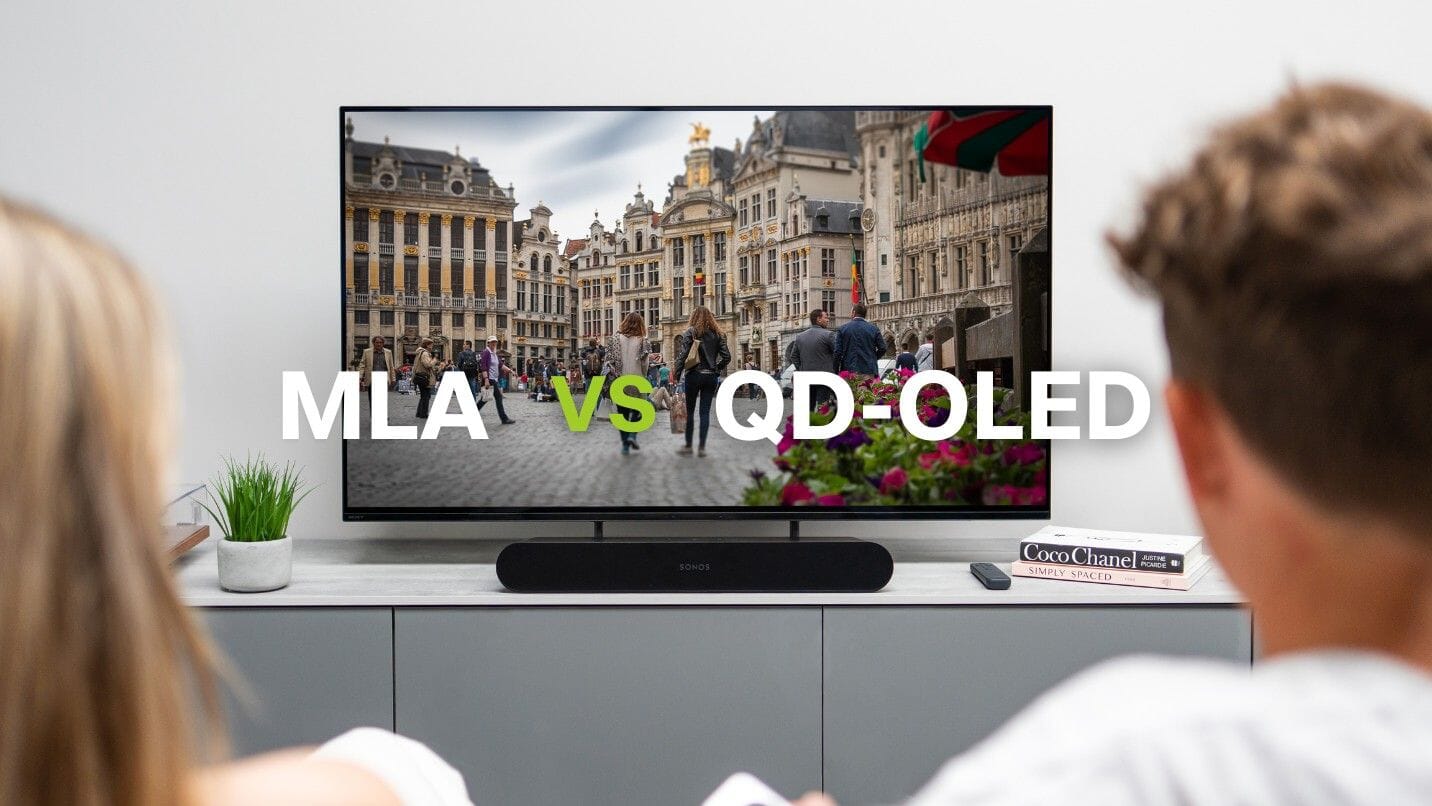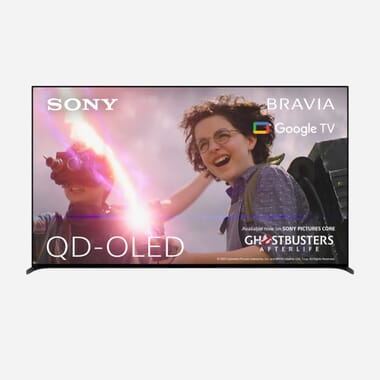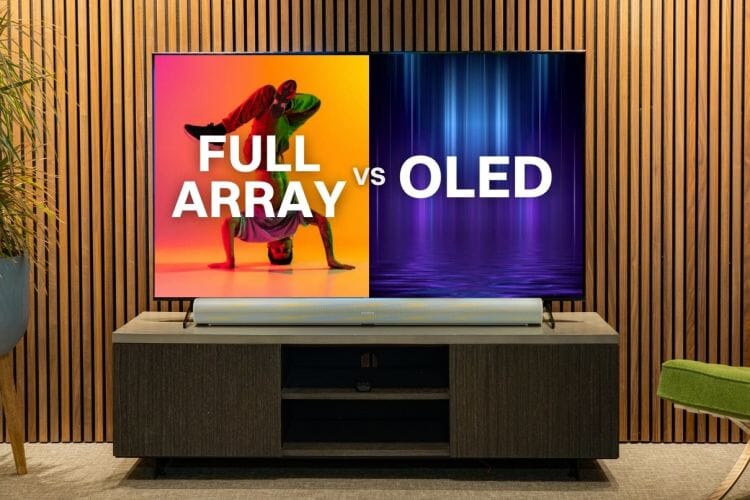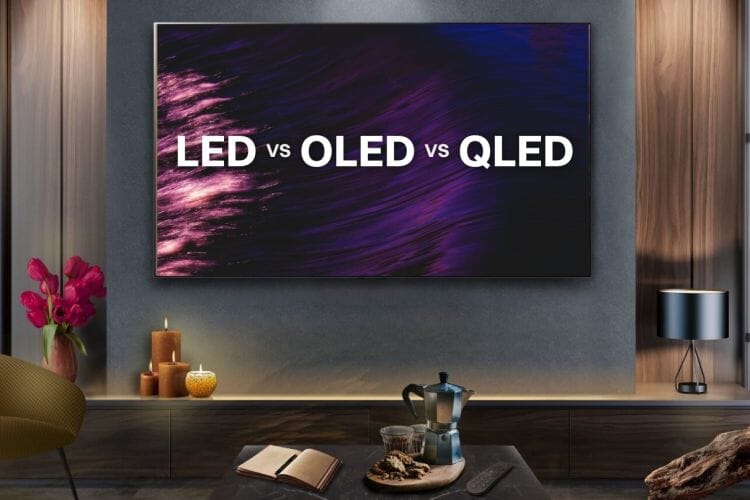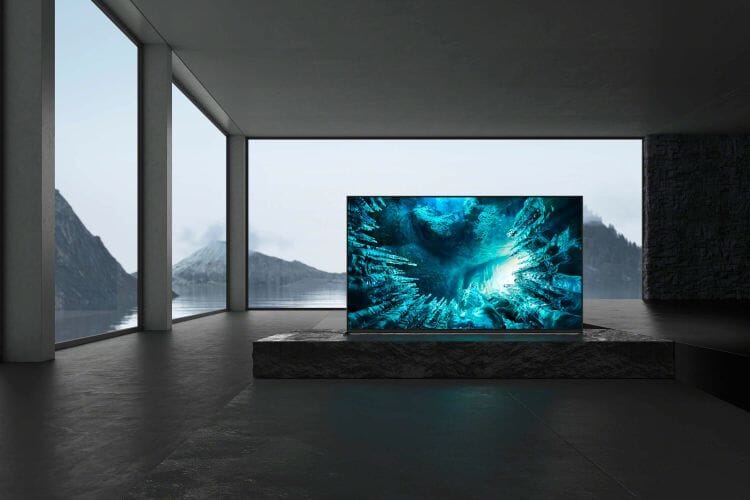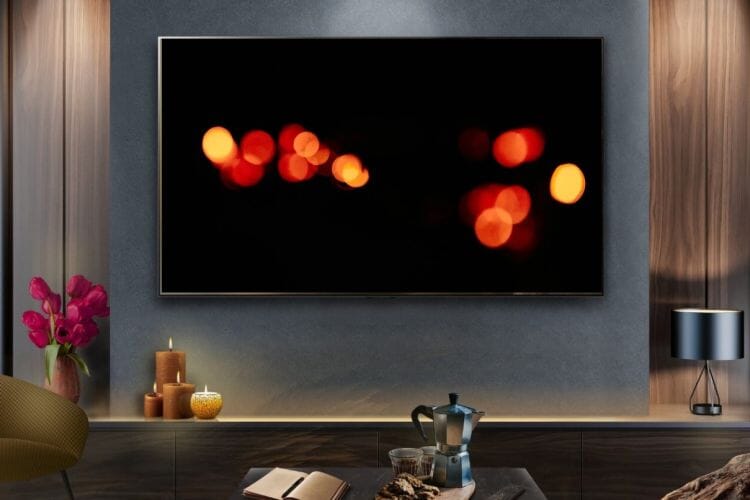MLA OLED vs. QD-OLED: What’s the Difference?
If you’re on the hunt for a new OLED TV, you might have heard about MLA and QD-OLED technology as the new leading technology for these models.
With TV manufacturers constantly trying to push the boundaries of OLED TVs, we’ve been left with a myriad of technological terms that can often feel very overwhelming to get to grips with. Leaving you wondering what does it all mean? And does it even matter?
Well for those looking to find the perfect TV for their home, the differences can make a big difference in which model you should go for. Whether you’re interested in the Sony A95L (QD-OLED), Samsung S95D (QD-OLED), LG G4 (MLA) or Panasonic Z95A (MLA) for example, you’ll struggle to find the best option without knowing the difference between the technology types.
While both MLA and QD-OLED share the common goal of enhancing OLED visual performance, throughout this blog, we’ll be breaking down the pros and cons of both technologies to help you find the best option for your home.
For this comparison, we will be using the LG G4 (MLA OLED) and the Sony Bravia XR A95L (QD-OLED) as examples. We highlighted both of theses as some of the best OLED TV’s on the market right now in recent reviews. Therefore, making these two of the best references to see MLA vs. OLED technology in all of their glory.
Want a more in-depth comparison? Watch our TV Panel Type Buying Guide on YouTube
💡 Useful Note: When talking about LG Display Technology and MLA, you may see the name META come up too. This essentially refers to the brand's META booster algorithm, which also helps to ensure peak performance. To avoid any confusion, just know they cover the same ground when it comes to TV displays.
What Is MLA and QD-OLED?
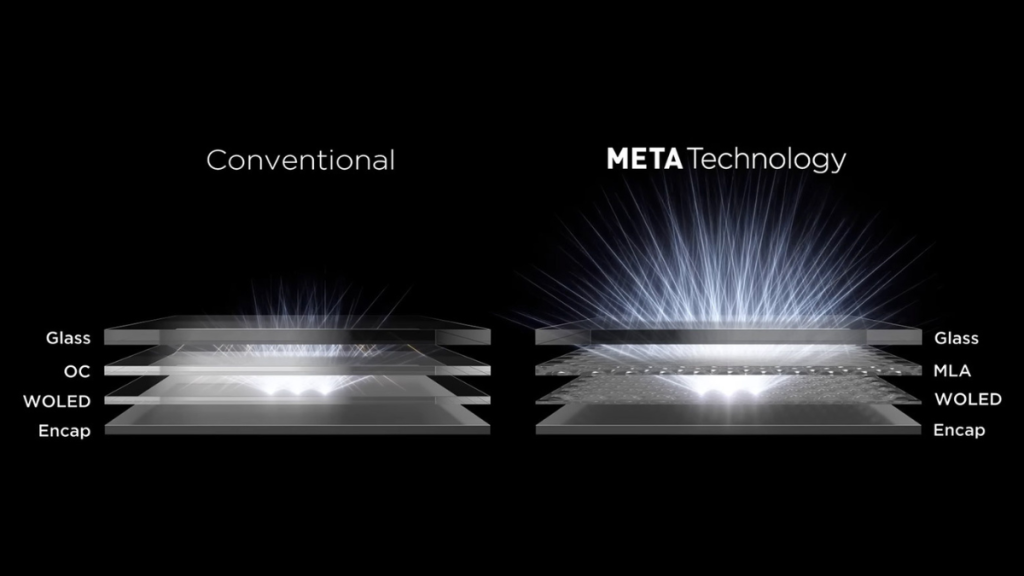
MLA OLED:
MLA (Micro Lens Array) is a new technology that has been developed to improve the visual performance of traditional OLED screens.
MLA works similarly to WOLED TVs; however, it adds an additional layer of microscopic lenses on top of the OLED subpixels to maximise the efficiency of those pixels.
How? The additional layer reduces the amount of brightness lost through internal reflections in a regular OLED TV, instead taking the light and helping to direct it outwards.
This improves brightness levels, creates a more vivid image and improves viewing angles all without requiring any additional power.
Given that traditional OLEDs tend to suffer in the brightness department, MLA’s ability to go beyond 2000 nits of brightness is astounding and solidifies its place as a game-changer within the OLED category as a whole.
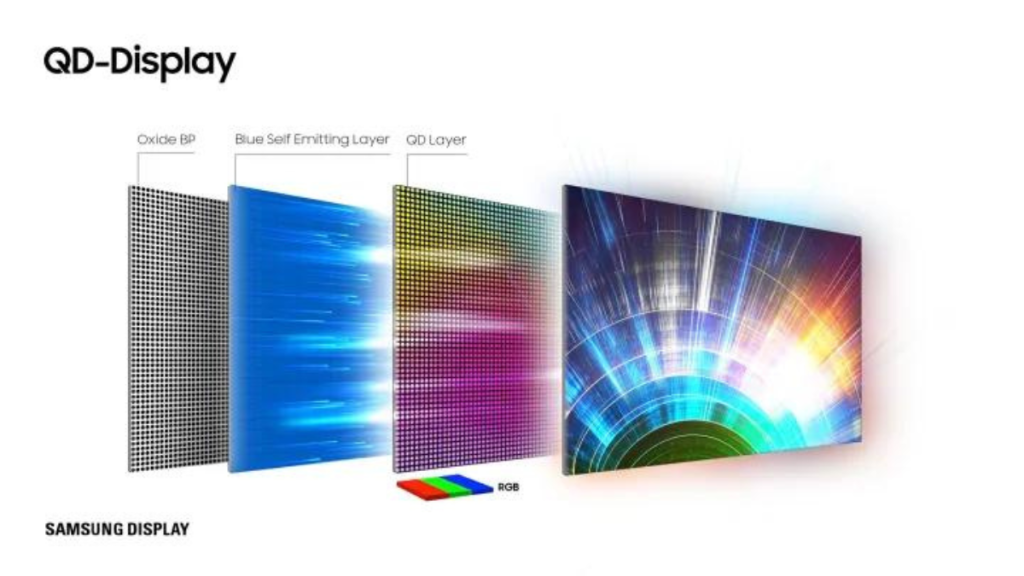
QD-OLED:
QD-OLED is a Samsung Display-manufactured technology that bridges the gap between Quantum Dot and OLED technology.
It’s a slightly more recognisable form of OLED display technology that’s been featured since 2022 in TV models from a variety of different brands, like the Sony A95K and Samsung S95B.
QD-OLED displays utilise a Quantum Dot filter to enhance the overall colour accuracy and brightness of your TV.
How does it do this? Well, QD-OLED TVs start with a bright blue LED light source. They then use red and green quantum dots to balance the blue into a complete white spectrum.
This white light then passes through an LCD matrix and a colour filter, which adjusts the light to produce a truer and more precise representation of the colour that’s needed on screen. Pretty neat, right?
LG G4 vs. Sony A95L
Strengths & Weaknesses at a Glance

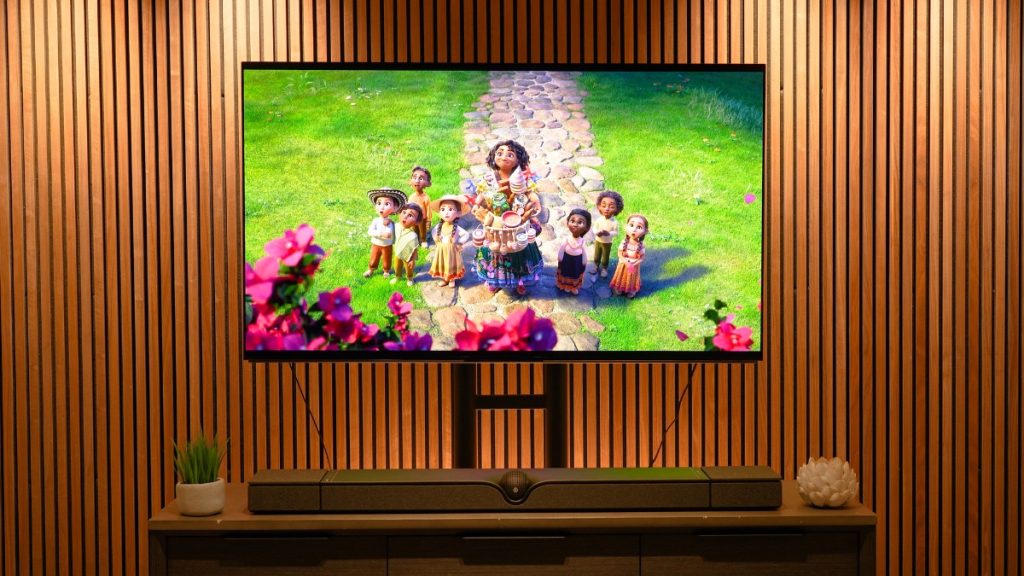
| LG G4 (MLA OLED) Strengths | Sony A95L (QD-OLED) Strengths |
| ✅ Typically produces a brighter image | ✅ Enhanced colour fidelity and vibrancy |
| ✅ More visible detail in darker scenes | ✅ Optimised balance and overall contrast |
| ✅ More affordable and wider range of sizes | ✅ Truer shadows and pure, inky blacks |
| ✅ 4x 4K/120hz HDMI ports | ✅ More accurate highlights |
| ✅ Greater pound for pound performance | ✅ Improved performance for 4K upscaling |
| LG G4 (MLA OLED) Weaknesses | Sony A95L (QD-OLED) Weaknesses |
| ❌ Requires calibration for true realism and true-to-life colour accuracy | ❌ More expensive and fewer choices of sizes (only available in 55”, 65” & 77”) |
| ❌ Colours can lose saturation in brighter scenes | ❌ Only 2x 4k/120Hz HDMI 2.1 ports |
More: LG 2024 TV Lineup: Find The Best LG TV For You
More: LG G3 MLA OLED: The Hype is Real...
What About WOLED?
You may have also seen the term ‘WOLED’ floating around the OLED market too. To keep things brief, WOLED panels take the makeup of a traditional OLED panel (with red, green and blue oled pixels) and add another white subpixel into the mix.
This acts to reduce the OLEDs tendency to suffer from burn-in considerably. However, it doesn’t match the efforts of MLA or QD-OLED technology when it comes to brightness and colour accuracy.
It’s still a step up from traditional (RGB) OLED, hence why the likes of Sony, LG and Samsung are opting for it in their mid-tiered OLED TV’s. But it’s just not quite as effective as their more premium (and more expensive) counterparts.
Verdict
There’s no denying that OLED technology has come a long way in recent times, and this year has been as transformative as any for TV manufacturers.
While there’s no “true” winner when it comes to MLA vs. QD-OLED, both are considerably better visually than the conventional OLED and WOLED displays that we’ve grown accustomed to.
For us, MLA is leading the charge for OLED brightness, while QD-OLED holds the position for best color accuracy and vibrancy. Following our testing, it's fair to say that the LG G4 and Sony A95L are two of the best OLED TVs we've tested to date.
For those looking for the brightest TV and have a tighter budget, then the LG G4 might be the best option for you. But for those after the most true-to-life picture quality with great contrast and colour accuracy, then the A95L might be worth the extra budget.
If you'd like any more information about anything that's been discussed, please reach out to info@smarthomesounds.co.uk, via Live Chat on our website or on 0800 677 1100 where one of our expert advisors will be happy to help.
Other Useful Content
For more information about screen types and TV technology, please take a look at our TV Buying Guide.
More On TV Tech:
>> Full-Array LED vs. OLED: The Differences That Actually Matter
>> LED vs. OLED vs. QLED - What Do They All Mean and Which Is Right for Me?
>> Mini LED vs OLED vs Micro LED: Pick Your Perfect TV Panel
>> QLED vs OLED: The Differences That Actually Matter
Helpful content:
Video: How To Choose The Right TV Screen Size
Video: Sony A80L: The Ultimate All-Rounder OLED
Blog: Panasonic TV Lineup 2024: Everything You Need To Know



